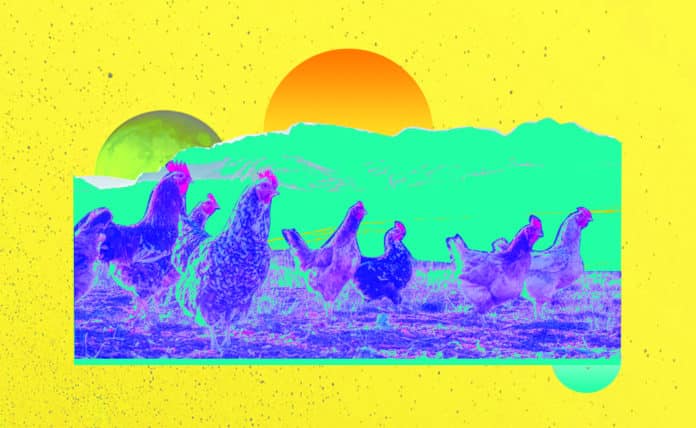
These days Internet of Things (IoT) connected devices impact on pretty much every aspect of our life—health and fitness, automotive and logistics, smart homes and cities
Farming and agriculture have seen many technological transformations in the last decades, becoming more industrialized and technology-driven. In this way have we seen IoT, connected devices and automation find applications in the modern world of farming and agriculture.
By using smart agricultural technology, farmers have gained better control over the process of rearing livestock and growing crops, bringing about massive efficiencies of scale, cutting costs and helping to save scarce resources such as water. The adoption of IoT solutions for agriculture is constantly growing and the global smart agriculture market size is also expanding rapidly. With all of this in mind, in what way(s) can technologies such as IoT transform or improve agriculture?
Stay in the Driving Seat
Maintain control over the internal processes and thereby decrease production risks. The ability to foresee the output of your production allows you to plan for better product distribution. If you know exactly how much (crop) you are going to harvest, you can make sure your
Control Costs
With the enhanced control over production, waste levels can be reduced and costs can be more effectively managed. Insight into any anomalies in the rate of crop growth or health of livestock allows you to mitigate the risk of a diminished yield or even a complete crop failure.
(Very) Big Data
Data collected by smart sensors can track things such as weather conditions, soil quality, crop’s growth progress or even cattle’s health. This data can be used to track the state of the operation in general as well as other factors such as staff performance, equipment efficiency, etc.
Improving Overall Quality
An effective IoT solution allows you to achieve better control over the production process and to maintain higher standards of crop quality and growth capacity through automation. As a result, you can eventually expect higher revenues. One specific type of IoT product that allows for precision farming are crop management devices. Similar to weather stations, they can be placed in the field to collect data specific to crop farming. Factors that can be tracked include temperature, precipitation, leaf water potential and overall crop health. By monitoring crop growth, and any anomalies, it is possible to effectively prevent diseases or infestations that can harm crop yield.
Efficiencies of Scale
These are brought about via process automation. By using smart devices, you can automate multiple processes right across the production cycle; for example, irrigation, pest control or fertilisation. A very popular smart agriculture gadget are weather stations which combine various smart farming sensors. Located all over a farm, they collect various data from the environment and send it to the cloud. The provided measurements can be used to map the climate conditions, choose the appropriate crops, and take the required measures to improve their capacity.
Getting Started
When setting out to build an IoT solution for agricultural / farming purposes, you need to choose the sensors for your device (or create a custom one). Ultimately this will depend on the type of information that you want to collect and what you want to do with the resulting data. The quality of your sensors is crucial to the success of your solution: success depends on the accuracy of the collected data and its reliability.
In one recent deployment in which I participated, South African nut farmer Robert Carlton-Shields turned to IoT in order to better manage his crop of Macadamia nuts, taking into account everything from soil moisture levels through to vehicle maintenance management. Through the use of IoT, Robert has turned his farm into a model of efficiency and productivity.
In developing markets such as Africa, the Middle East, Southeast Asia
An effective IoT solution should be able to operate at three levels:
- Allow for real-time collection and presentation of data
- Provide a solution that is low-powered, easy to install and cost-effective
- Provide a solution that is globally accessible, not restricted to
operator or local networks
Robert Carlton bought his Macadamia nut farm in 2011. The farm is approximately 100 hectares, comprising 52 orchards, all of varying sizes. The farm currently produces approximately 200 tonnes of nuts per year ranking it among one of the larger producers of Macadamia nuts in South Africa.
Macadamia trees are particularly susceptible to stress. Periods of prolonged drought (as was the case in South Africa in 2018) and overcompensating with watering, frequently results in stressed Macadamia orchards. The results can be extremely damaging to yield and quality.
Unless you are prepared to have a very dedicated (and expensive overhead) workforce out in the field, then optimizing yield and tree welfare is a real challenge to manage successfully.
Having just bought his farm in 2011, Robert decided to use technology to see if there were efficiencies to be gained by deploying a number of moisture sensing probes across his farm to help make timely irrigation decisions. It soon became clear that the probes, while accurate, needed as much time and effort (as physical observation) to manage properly. Each probe needed to be visited, have its data downloaded and then be brought back for interpretation. By the time a meaningful decision on irrigation needs could be made up to a week could have gone by.
Robert persisted and the next technical evolution was to attach a SIM to each of the farm’s 52 probes. While connectivity provided data collection efficiencies, each SIM had its own data plan (which needed to be manually ‘topped up’) and each probe needed to be initiated to collect the data. Add in multiple operators supplying the SIMs, plus the need to interpret the data, and the solution was still impractical to manage in order to gain efficiencies.
The farm is now able to optimise costs, labour usage and yields and quality in the following manner.
- Labour: there is no need to have a dedicated person running about in charge of data logging. This person can now be more gainfully employed elsewhere on the farm.
- Electricity: money will be saved due to more accurate irrigation and less electricity being used.
- Water: irrigation is more accurately managed meaning an overall saving in water consumption by the farm.
- Less-stressed: Robert’s Macadamia trees are less likely to be stressed, due to informed and timely decisions regarding bespoke orchard-by-orchard irrigation needs.
- Better yields: non-stressed ‘happy trees’ means better yields and higher quality Macadamia nuts
This real-life adoption of an IoT solution perfectly illustrates the expansion of global smart agriculture into remote areas and highlights the benefits that can be achieved using the latest technology.
IoT is set to further revolutionize farming, taking it to a whole new level of efficiency. Smart agriculture is becoming more commonplace among farmers, and high tech farming is quickly becoming the standard. Given all of the potential benefits of these IoT applications in agriculture, it’s no wonder why.
Neil Hamilton, VP Business Development, Thingstream – thingstream.io





 Related Podcast Episode
Related Podcast Episode




 Related Applications
Related Applications



 Latest IoT News
Latest IoT News









